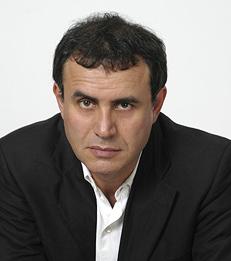Opinion
The Mystery of the Missing Inflation
—


But continuing for much longer with unconventional monetary policies also carries the risk of undesirable asset-price inflation, excessive credit growth, and bubbles.
By Nouriel Roubini
Since the summer of 2016, the global economy has been in a period of moderate expansion, with the growth rate accelerating gradually. What has not picked up, at least in the advanced economies, is inflation. The question is why.
In the United States, Europe, Japan, and other developed economies, the recent growth acceleration has been driven by an increase in aggregate demand, a result of continued expansionary monetary and fiscal policies, as well as higher business and consumer confidence. That confidence has been driven by a decline in financial and economic risk, together with the containment of geopolitical risks, which, as a result, have so far had little impact on economies and markets.
Because stronger demand means less slack in product and labor markets, the recent growth acceleration in the advanced economies would be expected to bring with it a pickup in inflation. Yet core inflation has fallen in the US this year and remains stubbornly low in Europe and Japan. This creates a dilemma for major central banks – beginning with the US Federal Reserve and the European Central Bank – attempting to phase out unconventional monetary policies: they have secured higher growth, but are still not hitting their target of a 2% annual inflation rate.
Read full article as published in Project Syndicate.
___
Nouriel Roubini is a Professor of Economics and International Business and the Robert Stansky Research Faculty Fellow.
In the United States, Europe, Japan, and other developed economies, the recent growth acceleration has been driven by an increase in aggregate demand, a result of continued expansionary monetary and fiscal policies, as well as higher business and consumer confidence. That confidence has been driven by a decline in financial and economic risk, together with the containment of geopolitical risks, which, as a result, have so far had little impact on economies and markets.
Because stronger demand means less slack in product and labor markets, the recent growth acceleration in the advanced economies would be expected to bring with it a pickup in inflation. Yet core inflation has fallen in the US this year and remains stubbornly low in Europe and Japan. This creates a dilemma for major central banks – beginning with the US Federal Reserve and the European Central Bank – attempting to phase out unconventional monetary policies: they have secured higher growth, but are still not hitting their target of a 2% annual inflation rate.
Read full article as published in Project Syndicate.
___
Nouriel Roubini is a Professor of Economics and International Business and the Robert Stansky Research Faculty Fellow.
